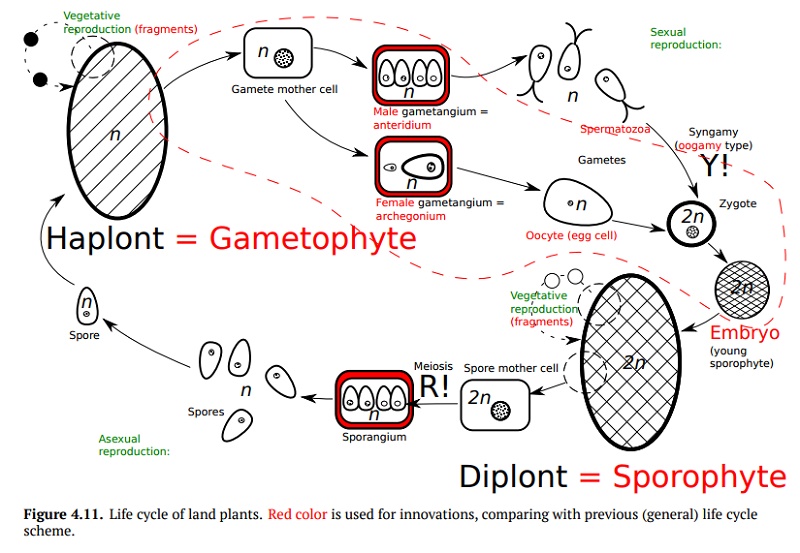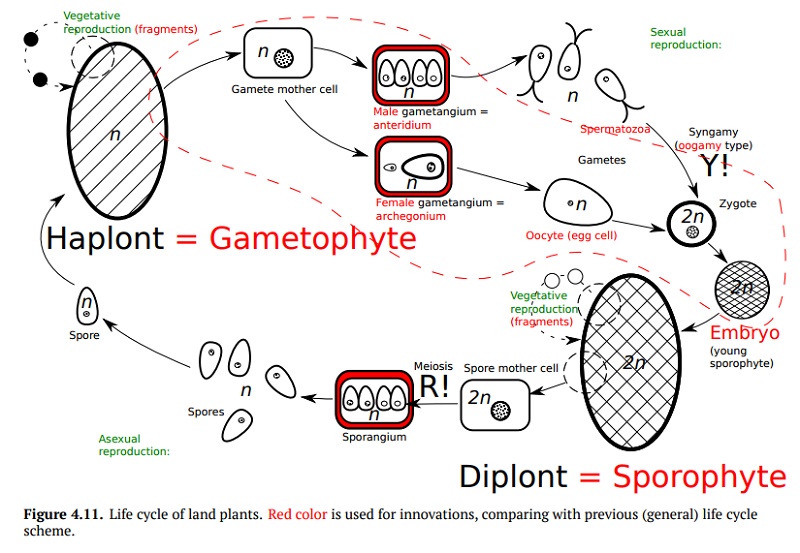Chapter: Introduction to Botany: Multicellularity, the Cell Cycle and the Life Cycle
Life Cycle of Vegetabilia

Life Cycle of Vegetabilia
Ancestors of Vegetabilia (plants2) were green algae with zygotic life cycle. It could be imagined that their zygote started to grow because these organisms in-habited shallow waters and want their spores to be distributed with a wind. One way for this to happen is to have the spores on the stalk of the plant. This is probably the reason of zygote growth: primordial diplonts of plants2 were sim-ply sporangia, structures bearing spores. Then the benefits of diploid condition described above started to appear, and these primitive plants went onto the road of haplont reduction. However, some Vegetabilia (liverworts, mosses and horn-worts), still have haplont domination. This is probably because their haplonts are poikilohydric (it is explained in next chapters), adaptation which is beneficial for small plants.
Life cycle of plants2 is sporic, but the science tradition uses plant-related names for the stages. The cycle (Fig. 4.11) begins with a diplont called a sporophyte, which produces spores. Sporophyte bears a sporangium, inside which mothercell of spores uses meiosis to make spores. The spores germinate and growinto haplont called gametophyte. Gametophyte produces gametes, specifically a spermatozoa (or simply “sperms”) and an oocyte (egg cell). These gametes are developed in special organs—gametangia. Gametangium which contains male gametes (sperms) is called antheridium, and female gametangium is archegonium, the last normally contains only one egg cell (oocyte).

By syngamy (oogamy in this case), the two gametes form a zygote. Next, a youngsporophyte grows on the gametophyte, and finally, the cycle starts again. Again,sporophyte of Vegetabilia starts its life as a parasite on gametophyte. Even flow-ering plants have this stage called embryo. Maybe, this is why the gametophyte of plants2 has never been reduced completely to transform their cycle into ga-metic. Even in most advanced plant lineages, their male (which makes only sperms) and female gametophytes have minimum 3 and 4 cells, respectively, but not 0!
Related Topics